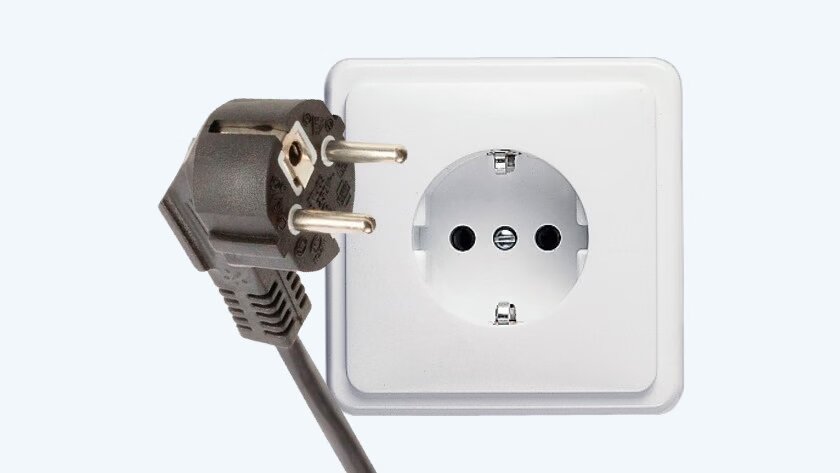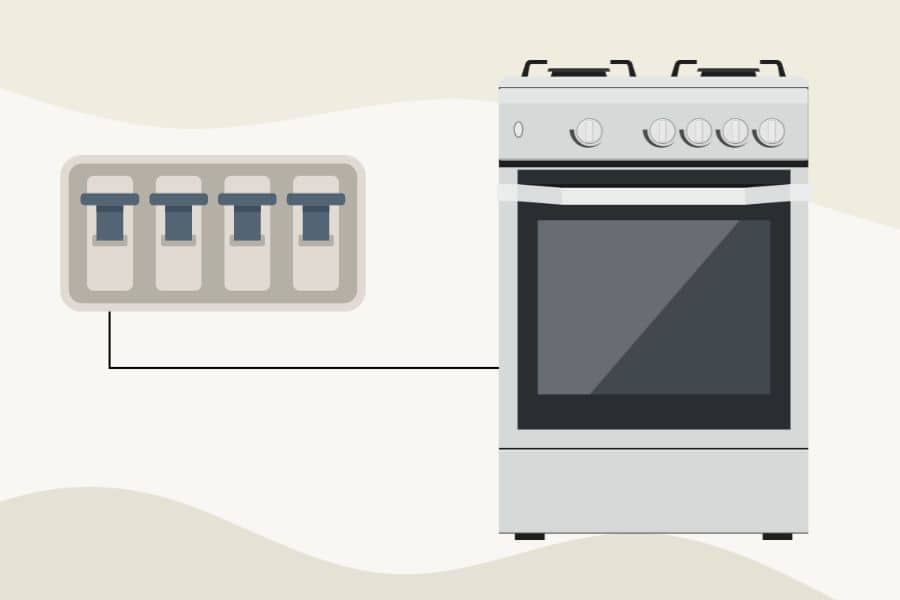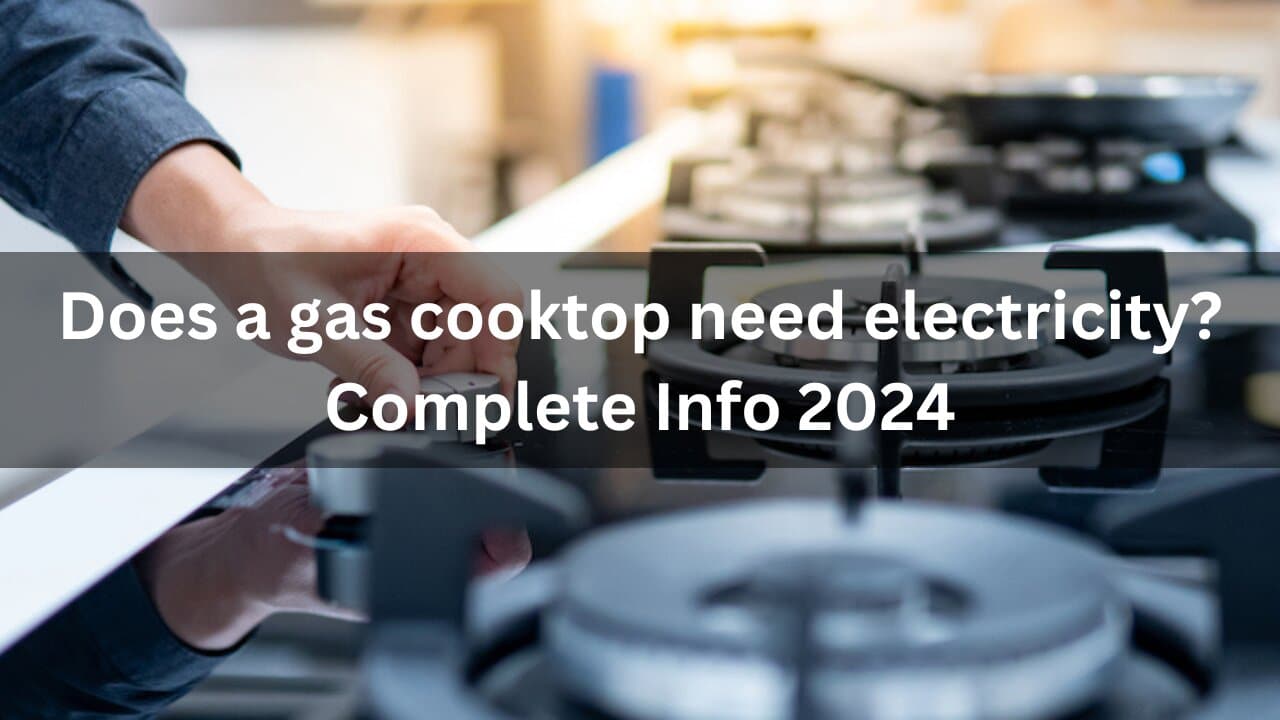Have you ever wondered if a gas cooktop can function without electricity? Understanding how essential appliances like gas cooktops operate can be surprisingly intriguing as we rely more on modern conveniences. Imagine you’re in the middle of preparing a delicious meal, and suddenly the power goes out. Will your gas cooktop still work? Or are you left scrambling for alternative cooking methods?
In this comprehensive guide, we’ll unravel the mysteries of gas cooktops and their relationship with electricity. Discover whether your cooktop needs a power source to ignite those flames, from the latest innovations to classic models.
In 2024, we’ll delve into the nuances of how electricity impacts gas cooktops, exploring everything from traditional manual systems to advanced electric igniters. Don’t miss this crucial information, which could affect your cooking setup and next power outage plan. Read on for the latest insights and ensure you’re fully prepared for culinary challenges.
Table of Contents
A Detailed Breakdown of Gas Cooktop Power Needs
Gas cooktops come in various types, each with specific electrical requirements. The simplest models might not need electricity, relying entirely on manual ignition methods like match lighting or a pilot light. However, many modern gas cooktops require electricity to power features like automatic ignition, digital controls, and safety mechanisms. These electricity-dependent models must be plugged into a power source to function properly. Additionally, some hybrid models partially depend on electricity, combining the best of both worlds for enhanced functionality and convenience.
Why Does a Gas Cooktop Need Electricity?
In modern gas cooktops, electricity is crucial in enhancing convenience, safety, and functionality. Gas stoves require both a gas line and an electric outlet. Electricity powers components like the clock, control panel, and electric ignitor. Unlike older models that used a pilot light, modern gas stoves rely on electric ignitors for ignition, making the process more efficient and safer. Additionally, electricity supports safety features like flame failure devices, which automatically cut off the gas supply if the flame goes out, reducing the risk of gas leaks. If you don’t already have a gas line behind your stove, you’ll need to hire a plumber to install one, as both gas and electricity are necessary for the cooktop to function properly.
Purposes You Need Electricity for Gas Cooktop
Electricity is essential for several critical functions in modern gas cooktops, enhancing safety and convenience. However, the power requirements are minimal compared to electric cooktops, and alternative options are available.

- Ignition Systems: Electricity powers the automatic igniters, allowing you to light the burners with the push of a button. While this is the standard method, you can still light the burners manually using a match or lighter if needed. Some gas cooktops are battery-operated or equipped with mechanical igniters, providing flexibility in situations where electricity is unavailable.
- Safety Features: Modern gas cooktops use electricity for safety mechanisms like flame sensors. These sensors detect if the flame goes out and automatically shut off the gas supply to prevent leaks, reducing the risk of accidents.
- Convenience Features: Electricity also supports various convenience features like electronic controls and timers. These features make it easier to adjust settings, monitor cooking times, and even control the temperature more precisely, providing a more user-friendly cooking experience. Despite these features, gas cooktops require very little power, making them energy-efficient compared to electric cooktops.
Does a Gas Cooktop Use Electricity?
Not all gas cooktops are created equal in terms of their electrical needs. Depending on their design and features, some models require electricity, while others function without it.
- Electricity-Dependent Models: Many modern gas cooktops rely on electricity for operation. These models use electric igniters to light the burners, eliminating the need for a pilot light. They may also feature electronic controls, timers, and safety mechanisms that require a continuous power supply. These cooktops offer greater convenience and safety but must be plugged into an electric outlet.
- No-Electricity Models: Older or simpler gas cooktops can operate without electrical power. These models often use manual ignition methods:
- Match Lighting: You can ignite the gas by using a match or lighter, a method still preferred by some for its simplicity.
- Pilot Light: Some models feature an always-on flame that ignites the gas when the burner is turned on. While effective, this method is less common in newer models due to its constant gas consumption.
- Hybrid Models: Hybrid gas cooktops offer a mix of both worlds. These models may use electricity for certain features, like ignition or digital controls, but can still operate manually if power is unavailable. This partial dependence on electricity provides enhanced functionality without entirely relying on a power source.
Does a Gas Cooktop Need to Be Plugged In?
Whether a gas cooktop needs plugged in depends on its design and features. Gas cooktops primarily rely on natural gas for cooking but require electricity for specific functions. The most critical electrical component in a gas cooktop is the ignition system, which ignites the gas burners. In many modern models, this system is electric, meaning the cooktop needs to be plugged into an outlet to operate the igniters and power other features like digital controls and safety mechanisms.

However, some older or simpler models need not be plugged in. These models often use manual ignition methods, such as a match or lighter, or they may rely on a pilot light that doesn’t require electricity. Some hybrid models can operate with or without electricity, giving you flexibility in a power outage.
In summary, while gas cooktops primarily run on natural gas, they often need to be plugged into power essential electrical components, particularly the ignition system.
Can I Use My Gas Stove Without Electricity?
Yes, depending on the model, you can use your gas stove without electricity. Many modern gas stoves rely on electricity to power the automatic igniters, which use a tiny electric spark to ignite the gas and create the flame. The spark ignition system would not function without electricity, making it impossible to ignite the gas and use the stove.
However, if you lose power, you can still manually ignite the burners using a match or lighter. This method bypasses the electric ignition system, allowing you to cook without electricity.
Older or simpler models might use a pilot light or manual ignition, which does not require electricity. While you may lose some convenience features such as electric controls, timers, or safety mechanisms, you can still cook on a gas stove during a power outage by lighting the burners manually.
Does a Gas Cooktop Need Its Circuit?
In modern kitchens, gas cooktops typically require an electrical setup to power features such as automatic igniters, digital controls, and safety mechanisms. However, a dedicated circuit is generally optional. Most gas cooktops can share an electrical circuit with other appliances, as they use relatively little power compared to other devices.
A regular 110/120-volt, 15-amp outlet is usually sufficient for the electrical outlet. This standard outlet is enough to operate the clock and burner igniters. If you have a dual-fuel setup with an electric oven, you might need additional considerations for the oven’s power requirements. Still, the standard outlet is typically adequate for the gas cooktop alone.

If you’re installing a new gas cooktop or if your kitchen’s electrical setup is outdated, consult with an electrician to ensure that the circuit is properly rated and meets local electrical codes. This ensures safe and efficient operation, especially if multiple high-power appliances are sharing the same circuit.
My Personal Experience: Navigating the Power Puzzle
I faced an unexpected power outage a few years ago while preparing dinner for a small gathering. As I confidently turned on my gas cooktop, I was relieved to see flames spring up, ready for action. However, security has improved, and I wondered how this gas cooktop functioned without electricity. Was it truly independent, or was there a hidden electric component I hadn’t considered? This led me to research and delve deeply into the workings of gas cooktops. In this post, I’m excited to share what I discovered, giving you a clear understanding of whether a gas cooktop needs electricity and why.
Conclusion
Gas cooktops come in various models, each with different electrical requirements. While natural gas is the primary energy source for cooking, electricity is crucial for many modern features. Basic models might operate without electricity, relying on manual ignition methods like matches or pilot lights. In contrast, many contemporary gas cooktops need electricity to power automatic igniters, digital controls, and safety mechanisms. These cooktops offer enhanced convenience and safety but must be plugged into an electrical outlet to function properly.
Electricity plays a vital role in modern gas cooktops by enabling efficient ignition, supporting safety features such as flame sensors, and providing additional conveniences like electronic controls and timers. However, some older or simpler models can function without electricity, using manual methods to ignite the gas. Hybrid models offer a blend of both approaches, allowing for operation with or without electricity, depending on availability.
In summary, while gas cooktops primarily use natural gas for cooking, many require an electrical connection to operate essential components. Understanding these requirements helps ensure you are prepared for any situation, including power outages, and can make informed choices about the best gas cooktop for your needs.
Related Articles:
Troubleshooting 5 Common Gas Cooktop Issues Latest Info 2024
Gas Cooktop Safety Tips And Precautions Complete Info 2024
Converting From Electric To Gas Cooktop Complete Info 2024
Gas Cooktop Design And Features Complete Info 2024
FAQs
1. Can a gas cooktop work during a power outage?
A gas cooktop can be used during a power outage with a manual ignition system or battery-powered ignition. However, if it relies on an electric ignition system, alternative methods may be needed to ignite the gas.
2. How can I light my gas cooktop if the electricity is out?
If your cooktop has a manual ignition feature or pilot light, you can use a match or lighter to ignite the gas. For models with battery-powered ignition, ensure the batteries are fresh.
3. Are there gas cooktops that don’t need any electricity?
Older or simpler models with manual ignition or pilot lights can operate without electricity. These models rely solely on gas for heating.
4. What should I do if my electric ignition system isn’t working?
If the electric ignition system fails, you can ignite the gas manually with a match or lighter. If the problem persists, consult a professional to repair or replace the ignition system.




